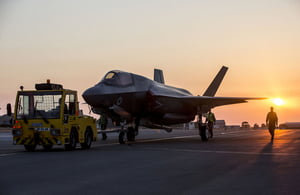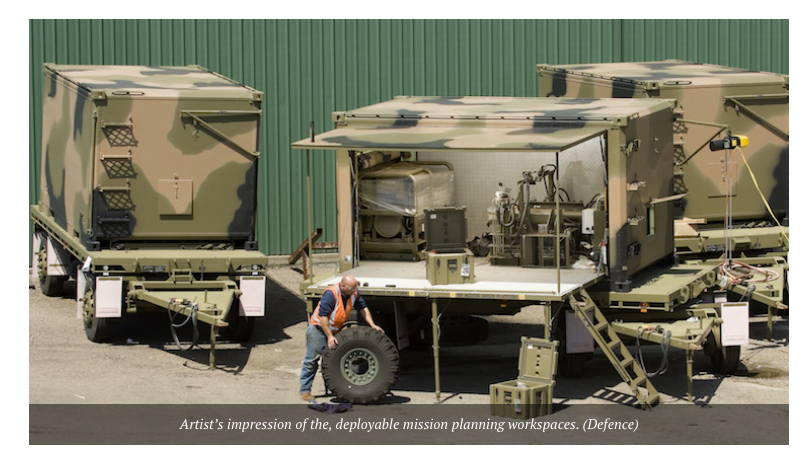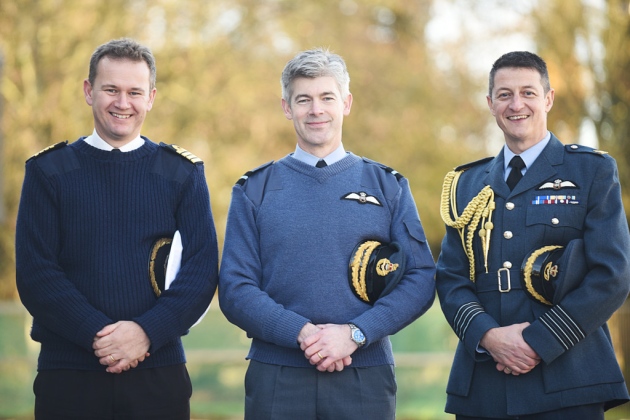Group Captain Townsend: F-35 Expeditionary Operations
Group Captain Ian Townsend has been involved with the UK and its F-35 program throughout the decade.
He is currently the base commander at RAF Marham and because of the departure of the Lightening Force Commander to London to serve in the MoD, was once again holding that position as well.
During my visit to the UK in May 2019, we had a chance to discuss as we have in the past, the progress of the F-35 integrating within the RAF and the UK defense force.
In particular, we discussed the next phase of integrating the F-35 into the force, namely, preparing for the deployment of F-35 as a an expeditionary force.
Here his focus in earlier interviews on both security and sustainability were highlighted as key elements for its coming deployment to Cyprus and for operating onboard the Queen Elizabeth carrier as part of the preparation for its 2021 initial operating tests.
Recently, senior officers announced this coming deployment to Cyprus in the Fall.
Chief of the Air Staff Air Chief Marshal Sir Stephen Hillier said:
“It is great to see 617 Squadron, the modern day Dambusters, flying the most advanced and dynamic fighter jet in the UK’s history and about to start their first overseas deployment.
“I have no doubt that this short deployment will offer many tests, but likewise I am confident that our highly trained and skilled personnel will rise to the challenge and confirm our ability to deliver truly formidable capability.”
Admiral Sir Philip Jones KCB ADC DL Royal Navy, First Sea Lord and Chief of Naval Staff said:
“This first overseas deployment of these world-beating British F-35B aircraft to RAF Akrotiri, together with their embarkation in HMS Queen Elizabeth for the first time in the Autumn of this year, are important milestones to prove their readiness for deployed operations anywhere in the world in defence of our national interests.”
Group Captain Townsend highlighted that the focus on deployment on Cyprus was not just about getting the air system ready for deployment, but in place an expeditionary eco system capable of supporting the operations of the aircraft.
“While we have moved our planes from Beaufort to Marham we have not moved the MCAS to Marham.
“This means we are undergoing significant learning as we integrate the air system into the UK operational environment. We are learning from the ground up how to support the aircraft,
“In a way the deployment is a bit of a pipe cleaner.
“The deployment is deliberately designed to ensure we can learn the lessons associated with deployability before we’re called upon to go and do it for real.
“And the genesis of this deployment was 3 1/2 to 4 years ago, when r Air Commodore Smyth and I were in the office worked the approach that shortly after initial operating capability we would like to try and get this airplane on an exercise overseas to try and test the sustainability.
“And that’s exactly what we are doing.”
He highlighted two main areas where they are focusing significant attention.
The first picks up on the theme which we discussed last year, namely, the security piece.
“My cyber support squadron are an integral part of a deployable air system.
“We have deployed classified systems abroad before, but the F-35 is a bit different and we are focused on the cyber security required to support the data systems integrated into the F-35.”
The second is the sustainment approach which is built around the ALIS (Autonomic Logistics Information System) or the IT system which supports F-35 sustainment.
The squadron has been focused on integrating ALIS within the UK’s sovereign operational systems as well as working on ways to ensure that it can operate effectively in supporting sustainment. And the cyber support squadron has been a key part of this effort as well.
He noted that they are taking their deployable tactical trailers to Cyprus to provide for the IT support for the ALIS system.
He argued that “I think ALIS is an incredibly malleable system if you understand the system.
“That’s again the work we’ve been doing over the last 12 months.
“We’ve got some deployable infrastructure that we’re going to take with us and use for the first time.”
Townsend argued: “We need to make sure we can protect F-35 in the right sort of way and as you’ll be aware this is a challenge that we haven’t done before in the same sort of way.”
The Brits are treating RAF Marham as the supply hub to resupply F-35s during the Cyprus operation, but in future they could tap into other F-35 supply hubs in the region as well.
The deployment to Cyprus puts them into an environment where the F-35 global collaboration comes into play with USAF, and USMC or USN, Italian or Israeli F-35s operating in the region as well.
“This comes back to the significant opportunity of operating a common fifth generation platform provides for the UK.
“We will have a significant opportunity to cross-learn and cross operate as the F-35 ramps up in deployed numbers in the region as well.
“Somehting which s being repeated as well in Northern Europe.”
And this expeditionary deployment precedes the 2021 deployment onto the Queen Elizabeth.
“The Dambusters will deploy onboard the Queen Elizabeth as a squadron for the first time this Fall, during operational test period 1.
“How can we best exercise our sovereign operational capabilities with the aircraft onboard our carrier?”
“Last year’s operational tests onboard the carrier were heavily supported by the US Navy and USMC.
“This deployment will be British.
“We will need to operate ALIS onboard our carrier and to ensure an effective ops tempo.
“The ship needs to understand how it’s going to integrate with the air system.
“We need to make sure we get the networks right.
“We need to make sure we get the information flow around the ship working properly.
“And we need to understand the security aspect of the operational eco system.”
Group Captain Townsend sees the flow from the Cyprus deployment to that of Queen Elizabeth as parts of the same learning process.
“There are going to be some similarities and some differences operating in the embarked environment.
“This is true particularly on the maintenance.
“And it won’t surprise you to know that because there are not a large number of people in the UK with F-35 expertise, quite a lot of my people from Marham are going to go onto the ship and try and de risk that first operational test period this Fall.”
He emphasized that the cyber support squadron was a key part of the air system deployability not just in terms of ALIS but in the mission systems area as well.
The aircraft is a unique aircraft in terms of how it handles data, and the squadron needs to be structured in a way that is symmetrical with the operational envelopment of the aircraft.
This is not about taking past practices and applying them to a replacement aircraft; this is about crafting a very different eco system for a very different combat air system.
The working relationship with the Marines will continue to be central as the Marines fly onboard the Queen Elizabeth in 2021 but comet to RAF Marham in 2020 as well.
Here working commonality in the logistics area is a key focal point, especially when operating onboard the new carrier.
“The Marines will come on board with discrete information systems.
“We need to understand how we are going to work side by side.
“Security will always be an interesting challenge between operating nations.
“I think we know all those areas to focus on and we’ve got another 18 months or so to make sure we get them right.”
“I really do think that what the Marine Corp does and the way in which they operate is very similar to what the UK does as well.
“There is a natural working relationship here which needs to be encouraged and leveraged going forward.”
And on June 25, 2019, the UK MoD announced the initial UK F-35/Typhoon combat operation.
F-35s have flown alongside Typhoon aircraft on operational flights over the skies of Syria and Iraq, as part of the ongoing fight against Daesh, the Defence Secretary has confirmed.
It follows a successful training period in Cyprus, known as Exercise Lightning Dawn, aimed at building capability for the aircraft and supporting elements.
Due to the exceptional performance of the aircraft, pilots, and support staff during this time, it was decided that they were ready to make their operational debut from RAF Akrotiri, alongside the Typhoons.
Speaking at RAF Akrotiri, Defence Secretary Penny Mordaunt said:
“The F-35s are the most advanced jets our country has ever possessed and will form the backbone of British air defence for decades to come.
“They have passed every test their training has thrown at them with flying colours and their first real operational mission is a significant step into the future for the UK.”
The first RAF F-35B operational sorties were flown on Sunday 16 June in support of Operation Shader, the UK contribution to the Global Coalition’s counter Daesh mission in Iraq and Syria. The two aircraft conducted a patrol over Syria, and UK F-35s have flown a further 12 sorties since then.
The F-35 is the first aircraft to combine radar-evading stealth technology with supersonic speeds and the ability to conduct short take-offs and vertical landings.
The Lightning force is jointly operated by the RAF and Royal Navy. With the ability to operate from land and sea, the F-35 forms a vital part of delivering a ‘carrier strike’ capability to the UK when combined with Britain’s new Queen Elizabeth Class aircraft carriers.
Chief of the Air Staff, Air Chief Marshal Sir Stephen Hillier, said:
“This first operational mission for the UK’s F-35 Lightning confirms the impressive progress which we have made in introducing this formidable new capability into service.
“It is testament to the outstanding abilities of our dedicated and highly trained air and ground crew that 617 Squadron has achieved this important milestone so quickly and so effectively.”
Admiral Tony Radakin CB ADC, First Sea Lord and Chief of Naval Staff, said:
“It’s great to see our F35B Lightning jets already proving themselves on operations so early in their life cycle, ably demonstrating the fantastic capability these world-leading aircraft offer.
“This Autumn, our aircraft carrier HMS Queen Elizabeth will return to the East Coast of the United States to conduct Operational Trials with our Lightning Force, taking this 5th generation capability to the next level as they prove their ability to operate from the sea.
“For decades to come, this exciting new combination of aircraft carriers and F35B Lightnings will provide a potent, globally deployable carrier strike capability, a powerful conventional deterrent and the centrepiece of our country’s expeditionary forces.”
Later in the year, 617 Squadron will embark in HMS Queen Elizabeth for the first time. The UK jets will conduct Operational Tests, alongside 17 Test and Evaluation Squadron, onboard the carrier in the USA during the WESTLANT 19 deployment, proving their capability at sea. This is vital step on the path to the first Carrier Strike Deployment planned for 2021.
The UK currently owns 17 F-35B aircraft with the reformed 617 Sqn arriving back in the UK last year. More jets are due in Britain over the coming years, including the imminent arrival of 207 Sqn at RAF Marham, and there is an overall plan to procure 138 aircraft over the life of the programme.

The programme has already generated $12.9 billion worth of orders and at peak production will support thousands of British manufacturing and engineering jobs.
UK Air Component Commander for the Middle East, Air Commodore Justin Reuter, said:
“The pilots, crew and aircraft have exceeded all training objectives since deploying to Cyprus so it was only right that they made the next step on their journey.
“The UK has played a vital role in liberating swathes of territory once subjected to Daesh’s cruel regime, and the deployment of our newest and most advanced jets signals our commitment to the enduring defeat Daesh in Iraq and Syria.”
The Defence Secretary also used the visit to hold a meeting with her Cypriot counterpart, Savvas Angelides, to further bolster bilateral ties.
Editor’s Note: In this article by Australian Aviation the transportable trailers mentioned by Group Captain Townsend are discussed.
Defence has signed a $37.5 million contract with Lockheed Martin Australia to provide the Royal Australian Air Force with deployable mission system equipment, primarily for the F-35A Lightning II.
Lockheed Martin is working with Newcastle-based Varley Group to deliver “transportable, secure and environmentally-controlled” Autonomic Logistics Information System (ALIS) workspaces to enable connection to ALIS elsewhere in the world. ALIS serves as the information infrastructure for the F-35.
The workspace cabins will also host off-board mission planning systems used by the RAAF’s F/A-18F Super Hornet, EA-18G Growler and P-8A Poseidon aircraft.
“Acquiring these new portable, Australian-made cabins is an important part of our Joint Strike Fighter program, and will mean that our top secret systems and personnel who support our jets on the ground will be securely housed and protected,” said Minister for Defence Industry Christopher Pyne.

The featured photo shows Group Captain Townsend, on the right, with the then Lightning Force Commander, Air Commodore David Bradshaw, and his deputy Captain Adam Clink, Royal Navy.

